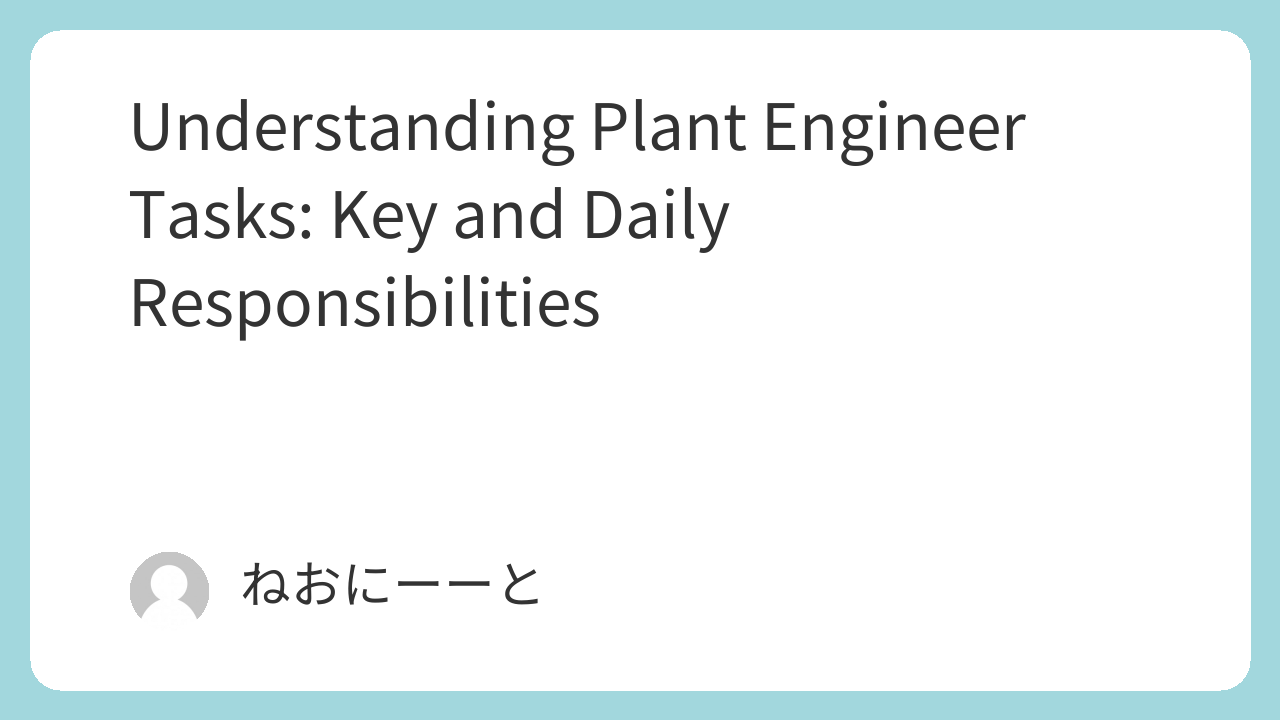Plant engineering can be hard to understand because it involves specialized tasks not visible in everyday life. In this article, I share my own work experience to explain what plant engineers actually do. If you are curious about plant engineering, this guide will give you a clear picture of both project-specific and daily responsibilities.
1. Project-Specific Tasks
These tasks occur when a new project or equipment installation happens. They include:
- Detailed Design: Creating design documents that outline equipment specifications, rationale, and safety considerations. Calculations are usually simple, done in Excel, but the reasoning behind design choices is crucial.
- Equipment Procurement: Writing specifications for vendors based on the design documents. Ensuring consistency between design rationale and procurement specs is important.
- Technical Review: Reviewing vendor estimates and technical proposals to ensure accuracy. Coordination with procurement is essential for price-related issues.
- Process Flow Drafting: Developing simplified process flows, which later support P&ID creation.
- Drawing Checks: Reviewing P&IDs, piping diagrams, and equipment drawings to ensure they match design intent.
- Regulatory Documentation: Preparing application materials for government approvals.
- Handing Over Materials: Providing completed documents to operations, maintenance, instrumentation, and electrical teams.
2. Daily Tasks
Daily responsibilities occur continuously, regardless of new projects. They include:
- Feasibility Study Estimates: Responding to requests for equipment or project estimates and maintaining a database of pricing and construction data.
- Budget Management: Tracking allocated and used funds to monitor remaining budgets and plan future spending.
- Updating Standards: Revising engineering standards based on lessons learned and periodic reviews.
Conclusion
Being a successful plant engineer requires balancing project-specific tasks, which build technical expertise, with daily responsibilities, which ensure smooth operation and control of resources. Understanding both aspects helps engineers manage projects effectively and contribute to long-term plant performance.

Comments